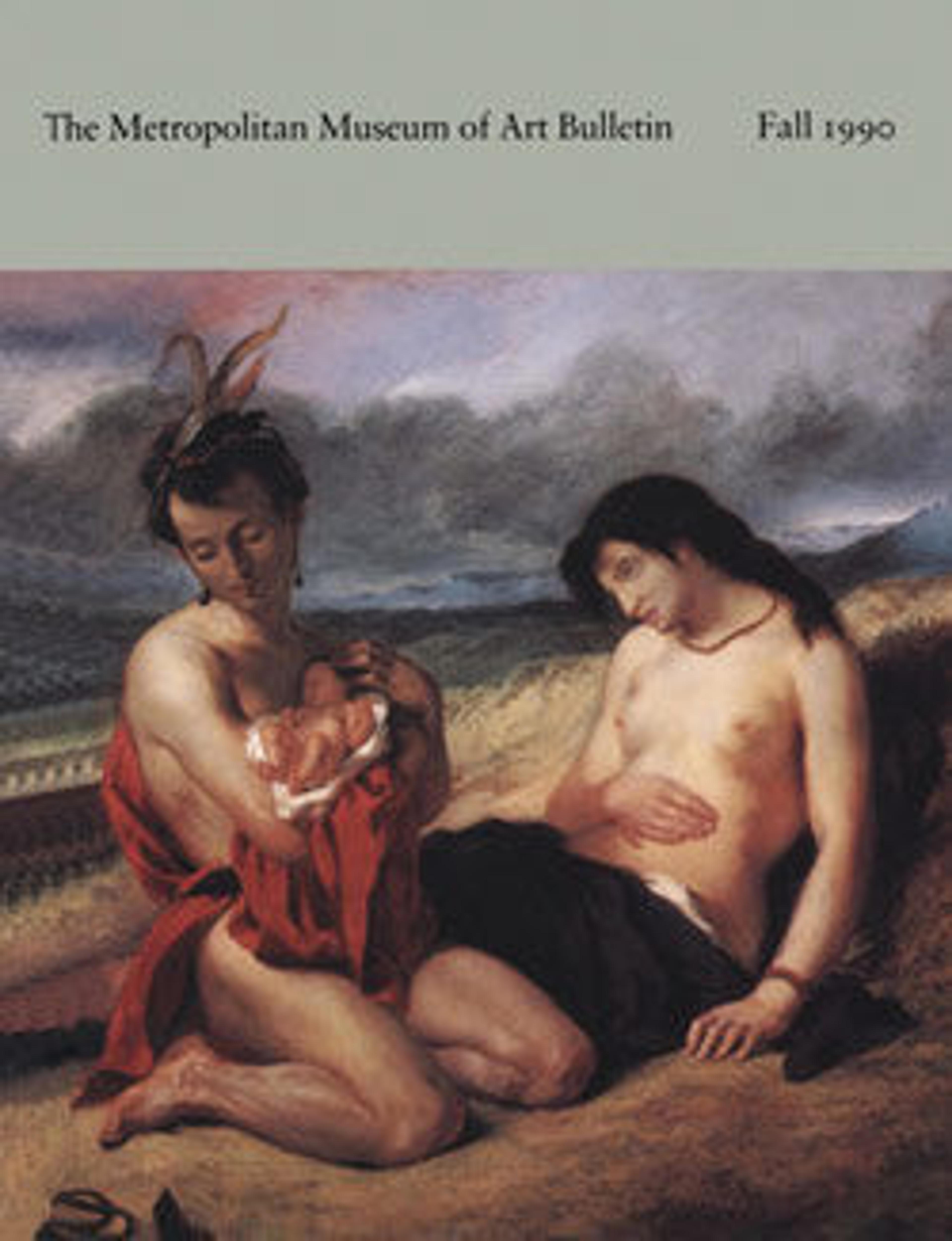The Sixteen Luohans
Best known for his paintings rendered in brilliant mineral colors, Qiu Ying sometimes worked in ink alone to demonstrate his skill as a draftsman. In this dynamic procession of luohans and their attendants, the figures are enlivened through exquisitely controlled, undulating and folded brush lines and luminous graded washes. Qiu's enthusiasm for detail is evident in the remarkable individualization of the holy men's eccentric features and the delicate textile designs of their robes. Although the artist's inscription credits the monk-artist Guanxiu (832–912) as the source of his inspiration, the ninth-century master's grotesque luohans have here been replaced by elegant Sinicized ascetics.
Reflecting the blending of Buddhism and Confucianism in later Chinese culture, this procession of luohans is shown ceremoniously escorting a Chinese scholar—identifiable by his tall cap and full robes—and his retinue out of the clouds.
Reflecting the blending of Buddhism and Confucianism in later Chinese culture, this procession of luohans is shown ceremoniously escorting a Chinese scholar—identifiable by his tall cap and full robes—and his retinue out of the clouds.
Artwork Details
- 明 傳 仇英 十六羅漢圖 卷
- Title:The Sixteen Luohans
- Artist:Attributed to Qiu Ying (Chinese, ca. 1495–1552)
- Period:Ming dynasty (1368–1644)
- Date:16th or 17th century
- Culture:China
- Medium:Handscroll; ink on paper
- Dimensions:Image: 13 9/16 x 206 3/8 in. (34.4 x 524.2 cm)
Overall with mounting: 13 7/8 x 468 3/4 in. (35.2 x 1190.6 cm) - Classification:Paintings
- Credit Line:Gift of Douglas Dillon, 1989
- Object Number:1989.235.3
- Curatorial Department: Asian Art
More Artwork
Research Resources
The Met provides unparalleled resources for research and welcomes an international community of students and scholars. The Met's Open Access API is where creators and researchers can connect to the The Met collection. Open Access data and public domain images are available for unrestricted commercial and noncommercial use without permission or fee.
To request images under copyright and other restrictions, please use this Image Request form.
Feedback
We continue to research and examine historical and cultural context for objects in The Met collection. If you have comments or questions about this object record, please contact us using the form below. The Museum looks forward to receiving your comments.
